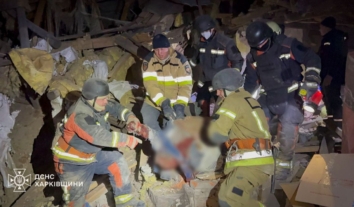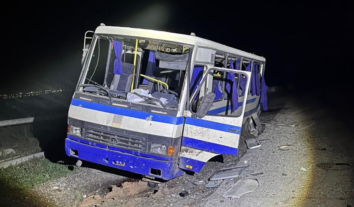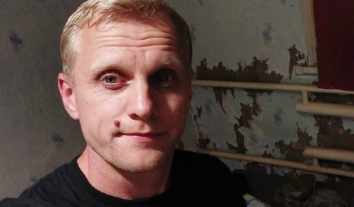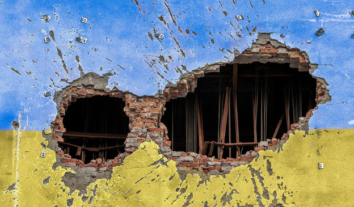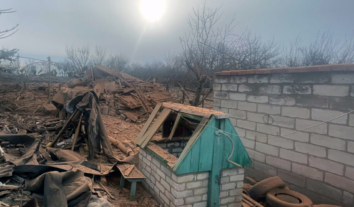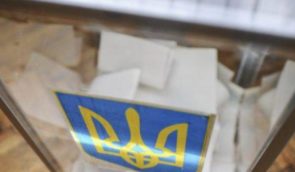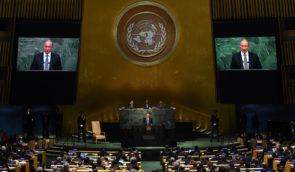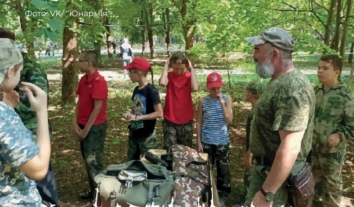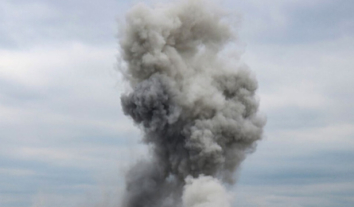Russians kill two civilians and injure three others in Kostiantynivka, Donetsk Oblast, with Molniya drone
Russian armed forces launched a drone attack on the town of Kostiantynivka in the Donetsk Oblast on May 16, 2025, killing two civilians and injuring three others, according to the Donetsk Oblast Prosecutor’s Office.

“Russian forces struck Kostiantynivka using a Molniya-1 UAV at 11:30 on 16 May 2025. A 55-year-old man suffered fatal injuries while driving a car. A 57-year-old man who was near a shelter was also killed,” the statement of the prosecutor’s office reads.
Additionally, two local women aged 53 and 72 sustained shrapnel wounds, burns and blast injuries.
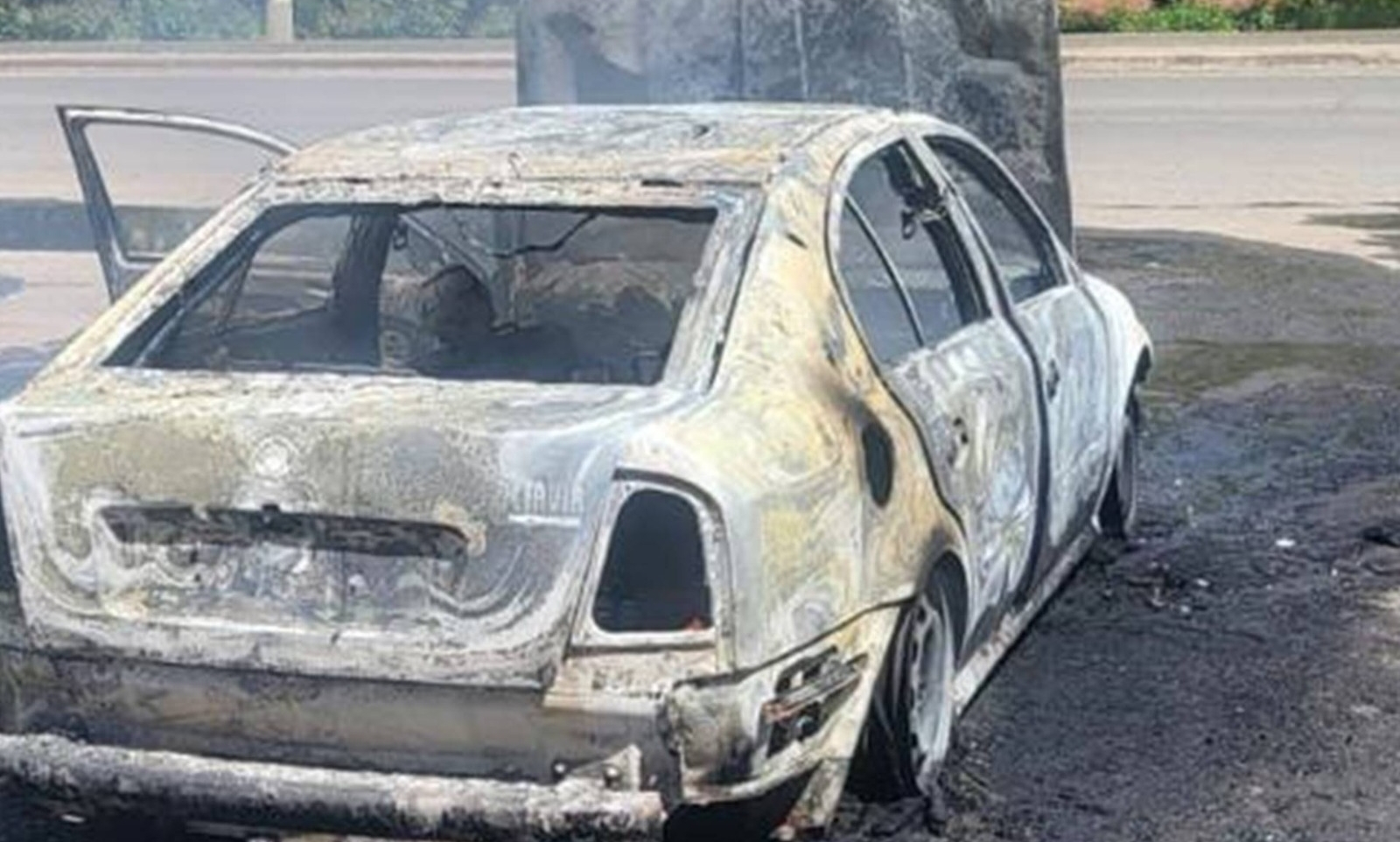
At 11:45, the Russians launched another strike on the town using an FPV drone. As a result of the attack, a 72-year-old woman who was at the market suffered a blast injury and shrapnel injuries. Doctors assess her condition as serious.
The people who had been injured received medical assistance and were taken to the hospital.
By way of background, on May 12, Russians injured a civilian freight train driver in a drone strike on a locomotive in the Donetsk Oblast, according to the Ukrzaliznytsia, a Ukrainian railway company.
On April 26, Russians killed four people in the Donetsk Oblast and one in the Kherson Oblast, according to the Donetsk Oblast Military Administration and the Kherson Oblast Military Administration.
Two citizens of Ukraine were killed in the town of Kostiantynivka and one in each of the settlements of Novoekonomichne and Zoria.
A further 17 people were injured in Donetsk Oblast on April 25, with seven in Kostiantynivka alone.
Four more people were injured in each of the settlements of Novoekonomichne and Nykanorivka, and one in each of Zoria and Siversk.
One person was killed and five were injured in the Kherson Oblast.
ZMINA continues to report on the ongoing international crimes in the Donetsk Oblast.
Ukraine urges the international community to unite to restore global security under the UN Charter and strengthen sanctions against Russia to enforce compliance with international law. Following Russia’s initial invasion in 2014, Ukraine has pursued the liberation of its territories within its internationally recognised 1991 borders while developing comprehensive reintegration strategies and policies for all liberated areas.
Previously, Bohdan Bernatskyy, a member of the Sanctions Policy Working Group of the Crimean Platform Expert Network, revealed at the Third Parliamentary Summit in Latvia that over 1,300 Russian military companies and 2 million industry workers continue operating, many without international restrictions.
On May 12, the Main Intelligence Directorate of the Ministry of Defence of Ukraine (DIU) published technical details of the new Russian S8000 “Banderol” cruise missile on the War&Sanctions portal.
Their research shows that the missile’s developer is the sanctioned enterprise Kronstadt. This company also manufactures the UAV Orion, which is Banderol’s main carrier. According to the DUI, the product is being adapted for use in Mi-28N attack helicopters.
According to the DIU, these foreign components have been identified in the Banderol missile:
- Swiwin SW800Pro jet engine (China) – an engine for aircraft modeling, which is even sold through online platforms (estimated cost on AliExpress – $16 thousand);
- Australian-made RFD900x telemetry module or its Chinese copy;
- Inertial navigation system, probably of Chinese origin;
- Murata batteries (Japan);
- Dynamixel MX-64AR servo drives (Robotis company, South Korea);
- Interference-protected CRP antenna Comet-M8 (Russian Federation, “VNIIR-Progress”), which is also used in Geran drone, Universal Module of Gliding and Correction, Universal Inter-service Gliding Munition;
- Almost two dozen microchips from American, Chinese, Swiss, Japanese and South Korean manufacturers.
“Most of the foreign electronic component base for this missile comes through the ‘chip and dip’ network – one of the largest Russian electronics distributors,” the DIU noted.
On May 9, Ukraine’s President Volodymyr Zelenskyy enacted the National Security and Defence Council’s sanctions against 58 Russian citizens and 74 companies, most of which are linked to Russia’s defence-industrial complex,
Interfax-Ukraine reports. The sanctions list also includes three companies from Iran, three from Uzbekistan, and one from Hong Kong (China).
The restrictive measures were adopted by the National Security and Defence Council of Ukraine and subsequently enacted by a presidential decree.
On May 1, Zelenskyy enacted the NSDC’s decision to impose sanctions on Novatek, Russia’s largest liquefied natural gas (LNG) producer and one of the largest natural gas producers in the Russian Federation.
Sanctions have been applied to 5 individuals and 36 legal entities. Specifically, the NSDC sanctions list includes PJSC Novatek, owned by Russian billionaire Leonid Mikhelson, and its subsidiary companies (Novatek-Energo, Novatek-Ust-Luga, Novatek-Tarkosaleneftegaz, Novatek-Yurkharovneftegaz, Novatek-Murmansk, Obsky Gas Chemical Complex, Obsky Ammonia, Novatek-Transservice, Arctic LNG 1, Arctic LNG 2, Arctic LNG 3, Murmansk LNG, Yamal LNG, Yamal Trade Pte. Ltd., Arctic Transshipment, as well as the Swiss company Novatek Gas and Power GmbH, and the Singaporean Novatek Gas & Power Asia Pte. Ltd.).
Moreover, sanctions have been applied to PJSC Novolipetsk Steel (NLMK), owned by Russian businessman Vladimir Lisin. It is Russia’s largest steel producer.
Several other plants, industrial complexes, and the “Russian Union of Industrialists and Entrepreneurs” were also sanctioned.
Previously, the Financial Times reported that Spanish Inditex, which owns the brands Zara, Bershka, and Pull & Bear, has exited Russia in a way that effectively allows it to retain control and the possibility of return.
In October 2022, Inditex sold its Russian subsidiary, now named New Fashion, to the Lebanese Daher family. They already hold a franchise for selling Inditex products in the Middle East. A month before the deal, the family established a company in the UAE called Mixed R — it was this company that officially bought the business.
Before finalizing the sale, Inditex wrote off a loan of 9.1 billion rubles (approximately $120 million) previously issued to its subsidiary in Russia, and transferred another 5.7 billion rubles (about $75 million) to it. After this, the company was sold for a “negligible” sum.
After the deal, new brands — Maag, Dub, Ecru, and Vilet — replaced Zara, Pull & Bear, Bershka, and Stradivarius in 243 stores. They sell nearly identical clothing, and the suppliers have remained the same.
Some Inditex designers, managers, and buyers moved to the UAE and work in the business that the Spanish company refers to as the “Daher Group.” Such a company officially does not exist, but it operates through Mixed R.
“‘The aim of the deal was the sale of our business… while preserving the possibility of returning to the market through a franchise agreement,’ Inditex said in an official statement.”


